Potential use of proprotein convertase subtilisin/kexin type 9 (PCSK9) inhibition and prevention method in viral infection
- PMID: 38528584
- PMCID: PMC10962113
- DOI: 10.1186/s12934-024-02355-8
Potential use of proprotein convertase subtilisin/kexin type 9 (PCSK9) inhibition and prevention method in viral infection
Retraction in
-
Retraction Note: Potential use of proprotein convertase subtilisin/kexin type 9 (PCSK9) inhibition and prevention method in viral infection.Microb Cell Fact. 2024 Nov 25;23(1):316. doi: 10.1186/s12934-024-02594-9. Microb Cell Fact. 2024. PMID: 39581964 Free PMC article. No abstract available.
Abstract
Cellular lipid membranes serve as the primary barrier preventing viral infection of the host cell and provide viruses with a critical initial point of contact. Occasionally, viruses can utilize lipids as viral receptors. Viruses depend significantly on lipid rafts for infection at virtually every stage of their life cycle. The pivotal role that proprotein convertase subtilisin/kexin Type 9 (PCSK9) plays in cholesterol homeostasis and atherosclerosis, primarily by post-transcriptionally regulating hepatic low-density lipoprotein receptor (LDLR) and promoting its lysosomal degradation, has garnered increasing interest. Conversely, using therapeutic, fully humanized antibodies to block PCSK9 leads to a significant reduction in high LDL cholesterol (LDL-C) levels. The Food and Drug Administration (FDA) has approved PCSK9 inhibitors, including inclisiran (Leqvio®), alirocumab (Praluent), and evolocumab (Repatha). At present, active immunization strategies targeting PCSK9 present a compelling substitute for passive immunization through the administration of antibodies. In addition to the current inquiry into the potential therapeutic application of PCSK9 inhibition in human immunodeficiency virus (HIV)-infected patients for hyperlipidemia associated with HIV and antiretroviral therapy (ART), preclinical research suggests that PCSK9 may also play a role in inhibiting hepatitis C virus (HCV) replication. Furthermore, PCSK9 inhibition has been suggested to protect against dengue virus (DENV) potentially and severe acute respiratory syndrome coronavirus 2 (SARS-CoV-2) viruses. Recent evidence regarding the impact of PCSK9 on a variety of viral infections, including HCV, HIV, DENV, and SARS-CoV-2, is examined in this article. As a result, PCSK9 inhibitors and vaccines may serve as viable host therapies for viral infections, as our research indicates that PCSK9 is significantly involved in the pathogenesis of viral infections.
Keywords: Cholesterol; Lipid; Proprotein convertase subtilisin/kexin type 9 (PCSK9); Treatment; Vaccines; Viral infection.
© 2024. The Author(s).
Conflict of interest statement
The authors declare no competing interests.
Figures
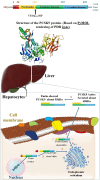
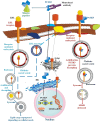
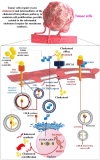

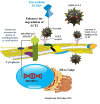
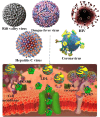
References
Publication types
MeSH terms
Substances
LinkOut - more resources
Full Text Sources
Medical
Research Materials
Miscellaneous

